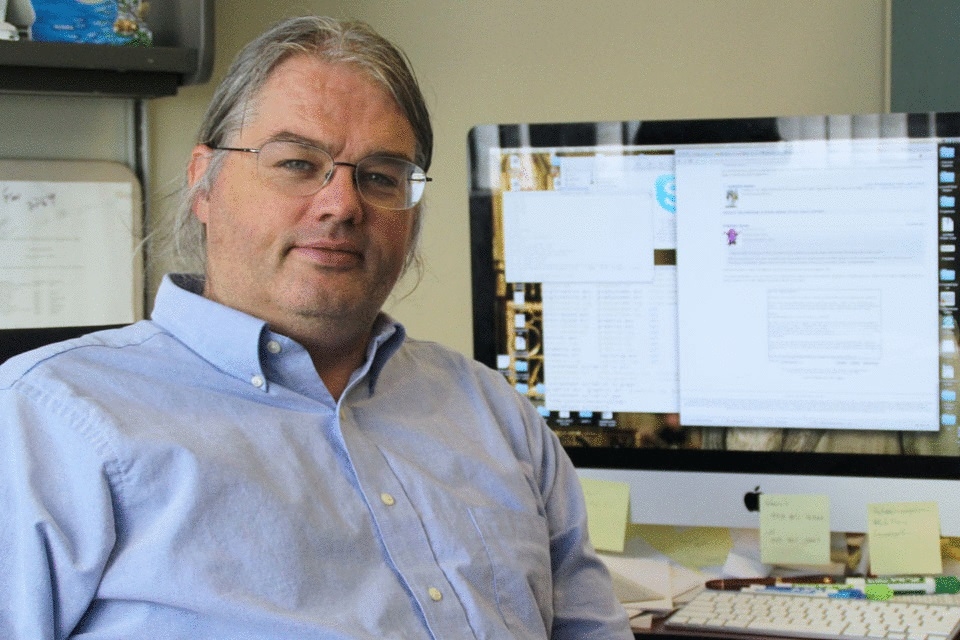
Patrick Juola, a DU computer science prof, has experience debunking authors’ aliases, such as J.K. Rowling and Elena Ferrante. However, he’s not sure who wrote the recent op-ed in the New York Times.

Patrick Juola, a DU computer science prof, has experience debunking authors’ aliases.
Gabriella DiPietro
10/26/17
When an author writes a novel, their name is displayed on the cover to receive acknowledgement and credit, but sometimes, authors write under pseudonyms to mask their true identity from readers. Recently, however, experts, including Duquesne Computer Science Professor Patrick Juola, have been able to unmask these authors and reveal the true names behind some of these pseudonyms.
Using a computer program Juola developed called Java Graphical Authorship Attribution Program (JGAAP), he examines and compares the word usage in various texts in order to learn if the authors of those texts were the same person. He used this program in 2013 to uncover that the author of “The Cuckoo’s Calling,” Robert Galbraith, was actually an alias for the acclaimed author J.K. Rowling, and now he is working to uncover a new mystery.
Elena Ferrante is a well-known and beloved Italian author, though this name is known to be a pseudonym. In 2016, an Italian reporter named Claudio Gatti declared that Ferrante was a pseudonym for Anita Raja, a translator and wife of author Domenico Starnone.
However, in September, findings were made at the University of Padua in Italy by Juola and a team of other experts that lead them to believe that Ferrante’s true identity is actually Starnone himself.
The team of experts collected 150 novels by 40 different authors in the past 30 years, which they analyzed to find a writing style that matched Ferrante’s through multiple methodologies.
Juola’s program is an essential methodology for large-scale projects such as the unmasking of Elena Ferrante’s true identity, as well as for all authorship attribution efforts.
“Authorship attribution is a sub field of the digital humanities, which is the use of computers to analyze traditional humanities’ problems,” Juola said. “The JGAAP software does text comparisons through looking at word choice, punctuation choice, and to some extent, some other psycholinguistic features like sentence and paragraph structure.”
Juola explained the level of difficulty the project holds, since Anita Raja is not a published novelist and has no writing that could be compared against Ferrante’s writing.
“It’s significant that the two suspected of being Ferrante are husband and wife,” Juola said. “Starnone may have helped Raja write, or they may be so used to each other that they have picked up some of each other’s linguistic habits, making it hard to discern who is the real Elena Ferrante.”
However, one of the different methodologies used revealed that Ferrante’s writing resembled that of a 60-year-old male from Starnone’s hometown. This demographical information does not match Raja, leading experts to believe that Starnone is the true identity of Elena Ferrante.
Juola enjoys studying authorship, and he was especially intrigued by the Elena Ferrante project.
“The results of this project were very interesting. Everyone labeled the same person as being the most similar author,” Juola said. “Authorship attribution gives me the opportunity to solve real life mysteries and pretend to be a detective like Hercule Poirot.”
Juola and the rest of the team hope their work will cause others to also look into the real identity of Elena Ferrante and unmask the true author.hen, it shall remain a mystery.




